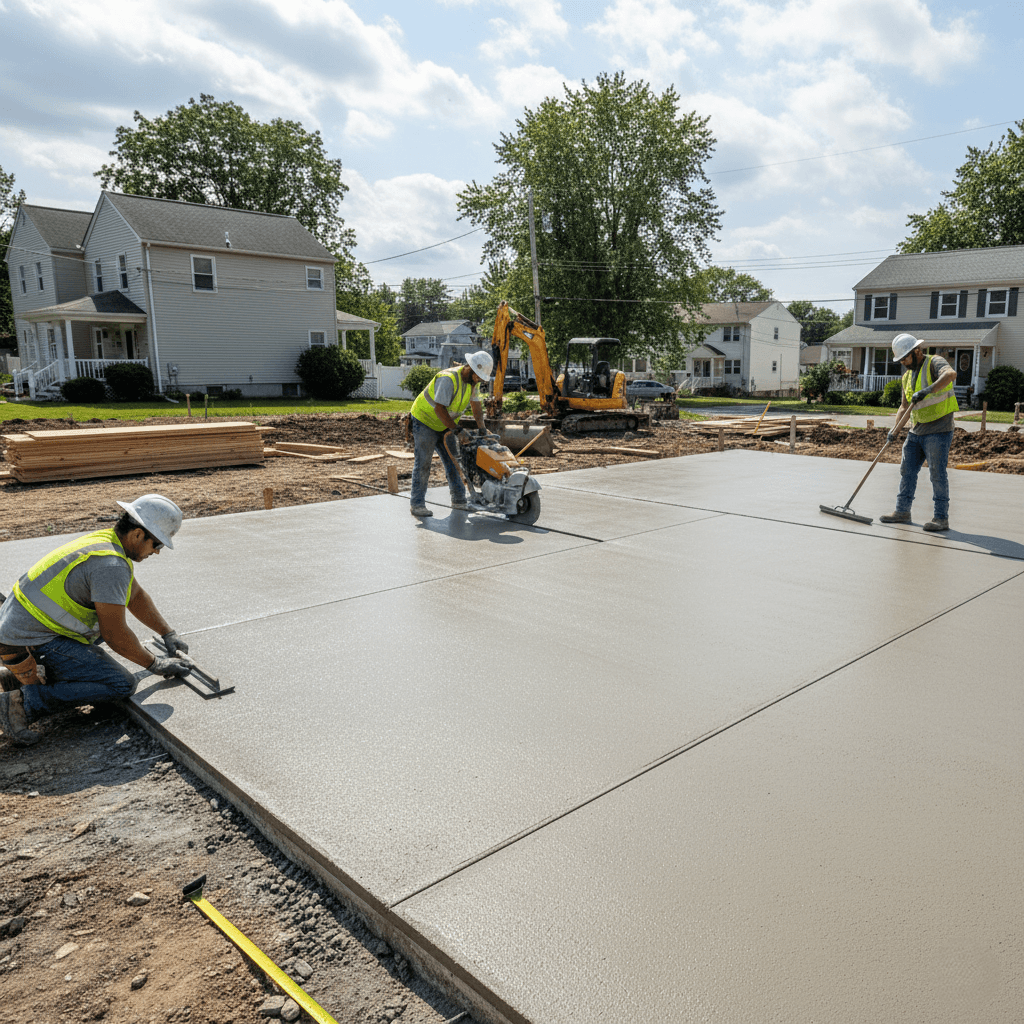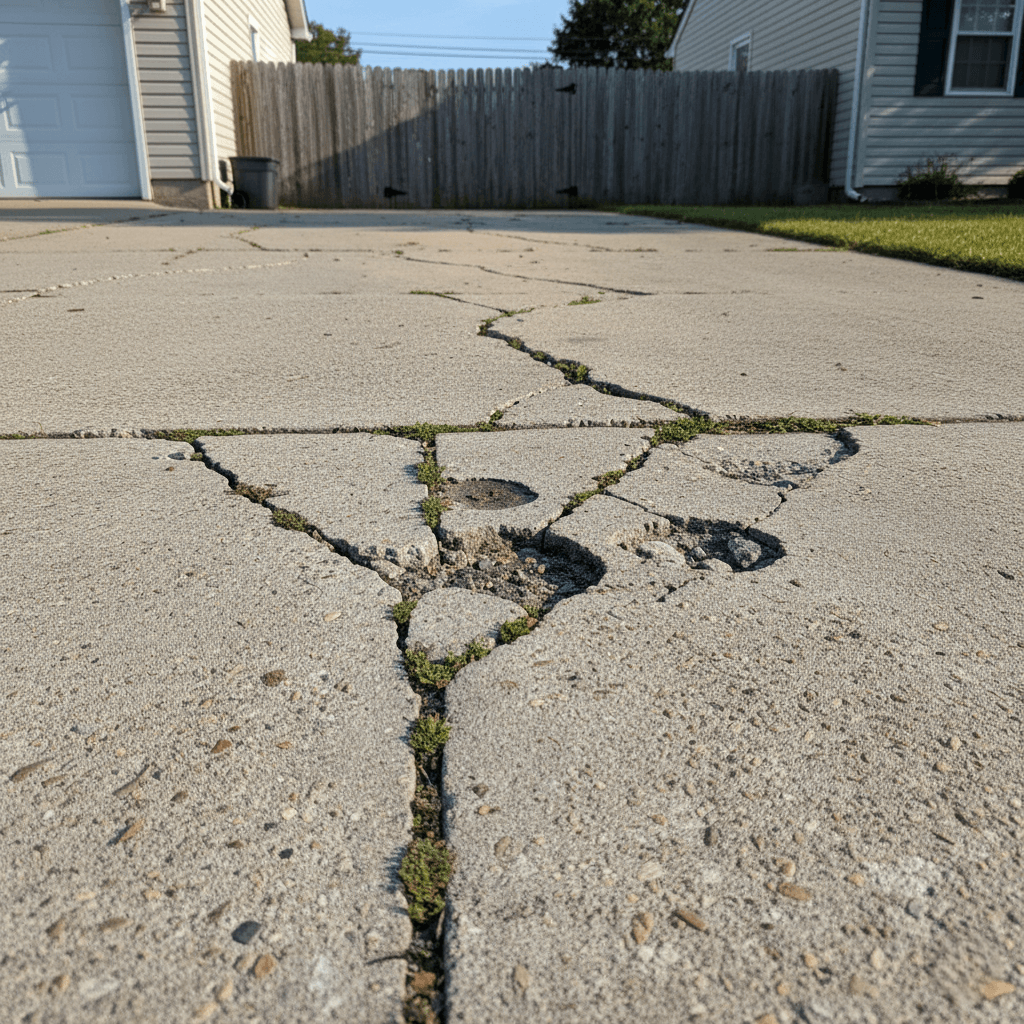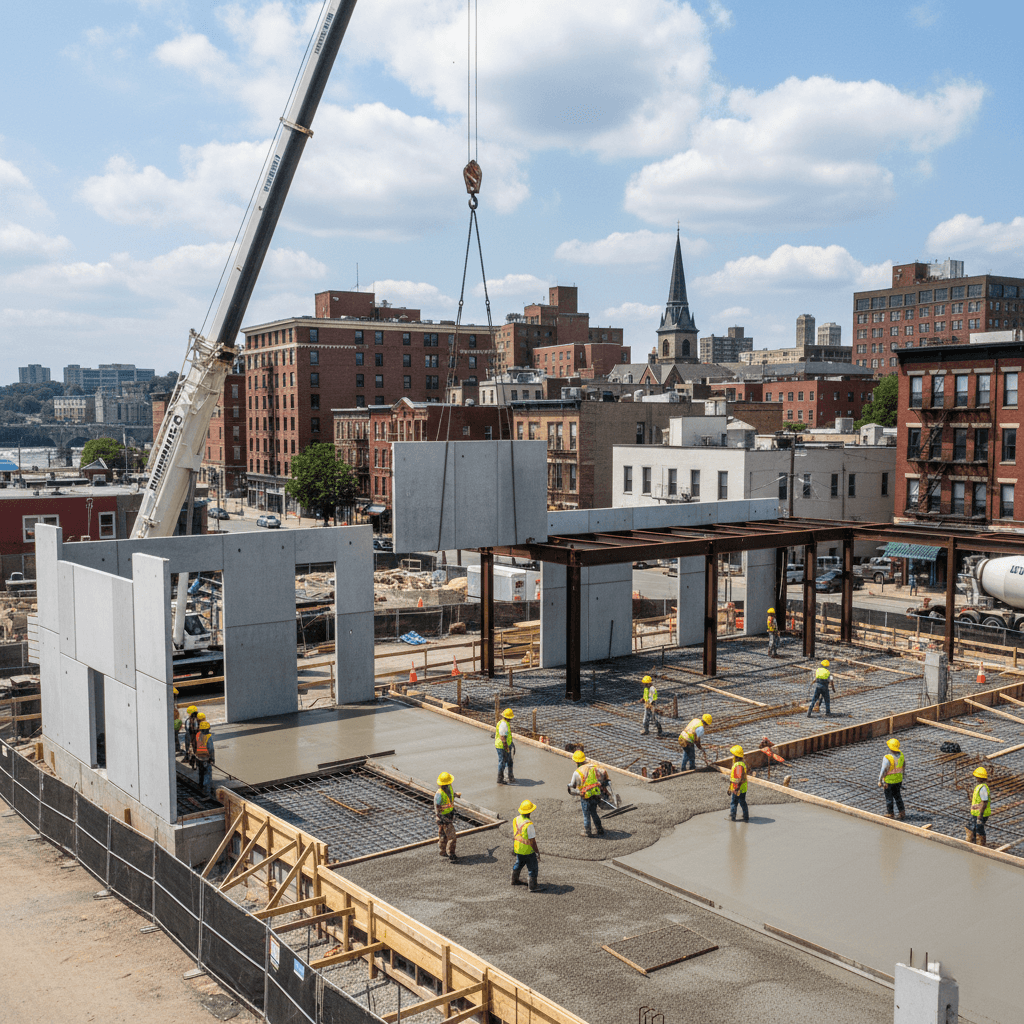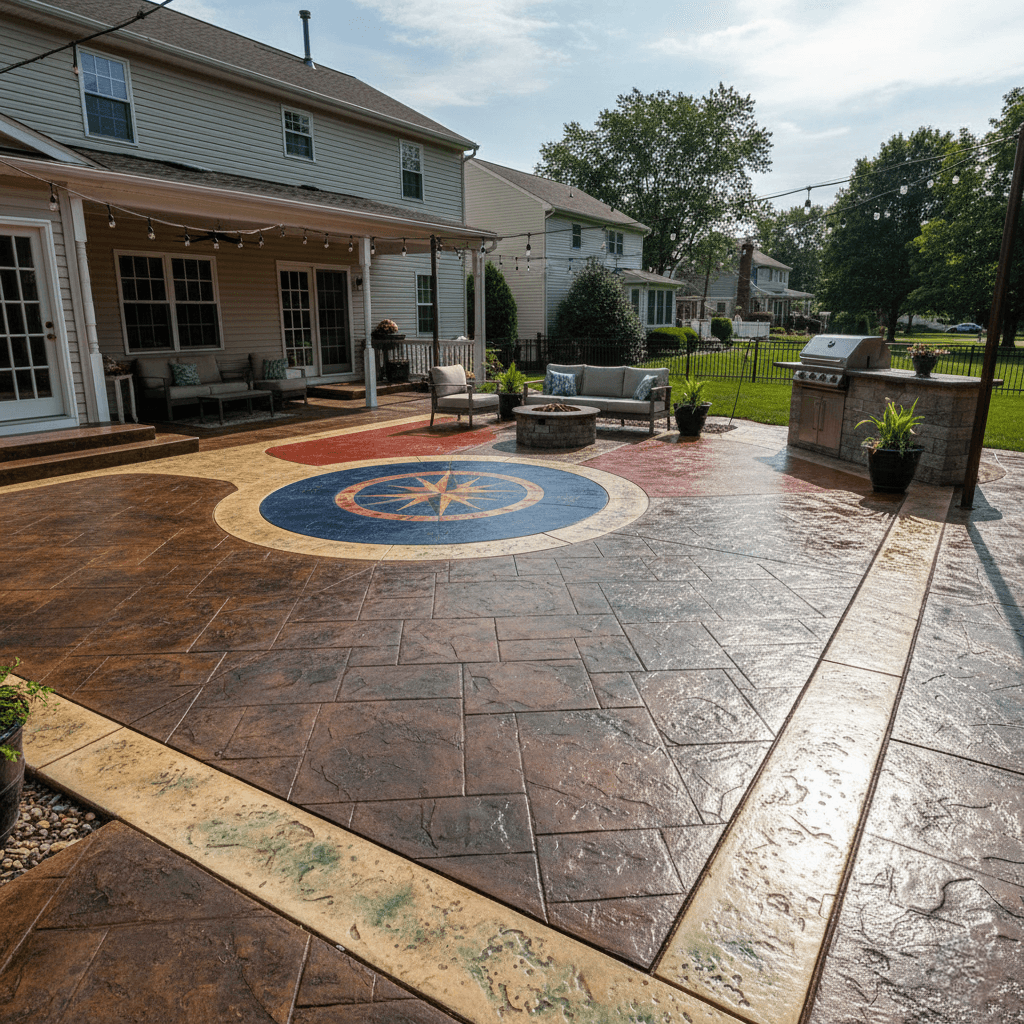
When Does a Concrete Surface Need Resurfacing in Paterson?
Concrete Resurfacing Paterson
Determining when a concrete surface requires resurfacing in Paterson, NJ, involves recognizing specific damage patterns and deterioration signs that indicate repair needs. Concrete resurfacing provides a cost-effective solution for addressing surface wear, minor structural issues, and aesthetic concerns without complete replacement. Understanding the timing for resurfacing helps homeowners maintain property value while preventing more extensive damage that could require costly reconstruction. Professional assessment becomes crucial when evaluating whether surfaces can benefit from resurfacing versus requiring full replacement. Moreover, Paterson’s climate conditions, including freeze-thaw cycles and moisture exposure, accelerate concrete deterioration and influence resurfacing decisions.

Visible Surface Damage and Deterioration Signs
The most obvious indicators for concrete resurfacing include surface flaking, chipping, and spalling that affect both appearance and functionality. Concrete surface damage typically begins as small areas of peeling or scaling but can spread rapidly without proper intervention. Additionally, exposed aggregate becomes visible when the top concrete layer deteriorates, creating rough textures that compromise safety and aesthetics. Professional contractors recognize these early warning signs and recommend resurfacing before damage progresses to structural concerns. Furthermore, discoloration, staining, and surface pitting indicate that protective barriers have been compromised, and resurfacing can restore integrity.
Spalling and Scaling Patterns
Spalling concrete repair becomes necessary when freeze-thaw cycles cause surface layers to break away, exposing underlying materials and creating safety hazards. This process typically starts with small flakes but progresses to larger chunks, breaking away from the main surface structure. Moreover, scaling affects only the top layer initially but allows moisture penetration that accelerates further deterioration. Professional evaluation determines whether spalling damage penetrates less than one-third of the concrete depth, making resurfacing a viable solution. Additionally, addressing spalling early prevents water infiltration that could compromise the entire structural integrity.
Crack Patterns and Structural Assessment
Crack assessment provides critical information about whether concrete surfaces are suitable candidates for resurfacing versus requiring complete replacement. Hairline cracks and surface crazing often respond well to resurfacing treatments that seal and protect against further moisture intrusion. Additionally, shrinkage cracks that don’t extend through the full thickness can be addressed through proper surface preparation and overlay application. Professional contractors evaluate crack width, depth, and pattern distribution to determine appropriate repair strategies. Furthermore, settlement cracks or structural movement issues may require underlying repairs before resurfacing becomes effective.
Load-Related Damage and Wear Patterns
Heavy traffic areas show specific wear patterns that indicate when surface deterioration indicators warrant resurfacing intervention rather than simple maintenance. Repeated loading causes surface compression damage, creating depressions and uneven areas that affect drainage and appearance. Moreover, tire marks, oil stains, and chemical damage from de-icing salts penetrate surfaces and compromise long-term durability. Professional assessment determines whether the underlying structural integrity remains sound despite surface wear and damage. Additionally, proper resurfacing can restore load-bearing capacity while providing enhanced resistance to future wear and chemical exposure.
Age and Environmental Factors
Concrete age provides important context for resurfacing decisions, as surfaces older than 15-20 years typically show accumulated wear that benefits from restoration. Environmental exposure in Paterson’s climate includes moisture, temperature fluctuations, and chemical exposure that gradually degrade surface protection. Additionally, inadequate initial sealing or maintenance allows accelerated deterioration that makes resurfacing more urgent and necessary. Professional evaluation considers the concrete’s original quality, installation methods, and maintenance history when recommending resurfacing timing. Furthermore, seasonal damage from winter conditions often creates multiple surface issues that comprehensive resurfacing can address simultaneously.
Moisture-Related Deterioration
Water infiltration through cracks, joints, or porous surfaces creates ongoing damage that progresses from aesthetic concerns to structural problems. Moisture penetration leads to freeze-thaw damage, particularly problematic in areas near Great Falls or the Passaic River, where humidity levels remain consistently high. Moreover, poor drainage around concrete surfaces exacerbates moisture problems and accelerates the need for protective resurfacing treatments. Professional contractors identify moisture sources and address drainage issues before applying resurfacing materials to ensure long-term success. Additionally, proper moisture barriers and sealers become integral components of effective resurfacing projects.
Safety and Liability Considerations
Safety concerns arise when surface deterioration creates trip hazards, slip risks, or unstable walking surfaces that require immediate attention. Uneven surfaces, loose concrete pieces, and rough textures increase accident risks and potential liability for property owners. Additionally, deteriorated surfaces near pools, walkways, or high-traffic areas present particular safety challenges that resurfacing can effectively address. Professional installation ensures proper surface preparation and finishing techniques that restore safe, slip-resistant surfaces. Furthermore, addressing safety issues promptly through resurfacing prevents more serious accidents and reduces long-term liability exposure.
Property Value and Aesthetic Impact
Curb appeal suffers significantly when concrete surfaces show visible damage, staining, or deterioration that affects overall property presentation. Resurfacing provides dramatic aesthetic improvements at a fraction of replacement costs while enhancing property value and marketability. Moreover, updated surface finishes can complement home improvements and landscape changes while maintaining consistent design themes. Professional contractors offer various finishing options, including colors, textures, and patterns that enhance rather than simply repair existing surfaces. Additionally, well-maintained concrete surfaces contribute to neighborhood standards and property values throughout areas like Eastside Park and downtown Paterson.
Cost-Benefit Analysis of Resurfacing vs Replacement
Financial considerations favor resurfacing when structural integrity remains sound, but surface conditions require improvement for functionality and appearance. Resurfacing typically costs 50-70% less than complete replacement while providing comparable aesthetic and functional improvements. Additionally, shorter project timelines and reduced disruption make resurfacing more practical for occupied properties and busy areas. Professional cost analysis considers long-term maintenance requirements, expected lifespan, and performance benefits when recommending resurfacing solutions. Furthermore, energy savings from avoiding demolition and disposal make resurfacing environmentally responsible and cost-effective.
Long-term Performance Expectations
Proper resurfacing installations provide 10-15 years of reliable service when applied over sound substrates with appropriate surface preparation. Performance expectations include restored appearance, improved functionality, and enhanced resistance to weather and wear factors. Moreover, quality resurfacing materials and professional installation techniques ensure compatibility with existing concrete and optimal bonding characteristics. Professional contractors provide realistic performance projections based on local climate conditions, usage patterns, and maintenance requirements. Additionally, warranty coverage and maintenance recommendations help property owners maximize resurfacing investment value and longevity.
Professional Assessment and Timing
Professional evaluation provides an objective assessment of the concrete condition, resurfacing suitability, and optimal timing for intervention. Experienced contractors recognize subtle signs of deterioration that homeowners might overlook while providing accurate repair recommendations. Additionally, seasonal timing affects resurfacing success, with spring and fall generally providing optimal weather conditions for curing and bonding. Professional scheduling ensures adequate preparation time, weather monitoring, and proper curing conditions for maximum performance. Furthermore, coordinating resurfacing with other maintenance projects maximizes efficiency and minimizes property disruption.
Surface Preparation Requirements
Adequate surface preparation determines resurfacing success and involves thorough cleaning, crack repair, and substrate evaluation before overlay application. Professional preparation includes pressure washing, mechanical abrasion, and chemical cleaning to ensure optimal bonding between old and new materials. Moreover, proper moisture testing and substrate soundness evaluation prevent premature failure and ensure lasting repairs. Experienced contractors understand local soil conditions, drainage requirements, and climate factors that affect preparation methods. Additionally, quality preparation work often requires specialized equipment and expertise that justify professional installation rather than DIY approaches.
Material Selection and Application Methods
Modern concrete restoration options include polymer-modified overlays, decorative resurfacing systems, and specialized repair mortars designed for specific damage types and performance requirements. Material selection depends on existing concrete condition, intended use, aesthetic preferences, and budget considerations. Additionally, compatibility between resurfacing materials and existing concrete ensures proper bonding and long-term performance without delamination issues. Professional contractors understand material properties, application requirements, and curing specifications that determine project success. Furthermore, advances in resurfacing technology provide enhanced durability, appearance options, and performance characteristics compared to traditional repair methods.
Quality Control and Installation Standards
Professional installation follows established standards for surface preparation, material mixing, application techniques, and curing procedures that ensure optimal results. Quality control measures include substrate testing, material verification, thickness monitoring, and proper finishing techniques throughout the installation process. Moreover, experienced contractors understand local climate considerations and adjust procedures accordingly to accommodate Paterson’s weather patterns and seasonal challenges. Proper documentation and testing verify that resurfacing meets specifications and performance requirements for long-term success. At Paterson Concrete Works, we provide comprehensive concrete resurfacing services that restore both functionality and appearance while extending surface life and enhancing property value through professional assessment, quality materials, and expert installation techniques.


